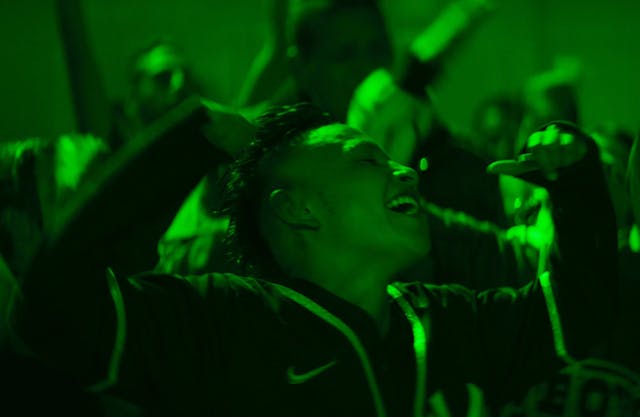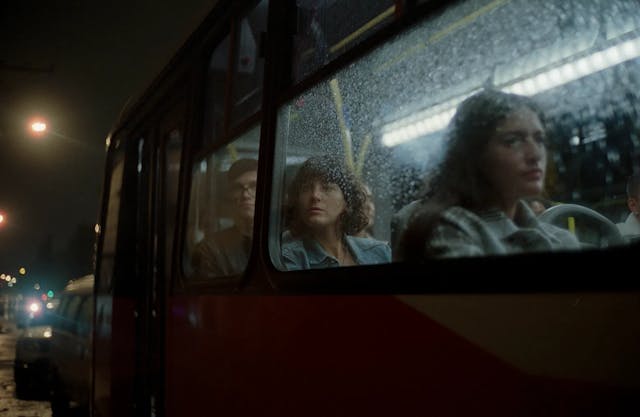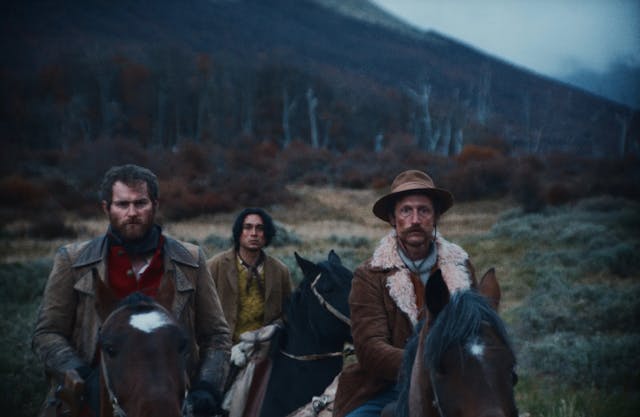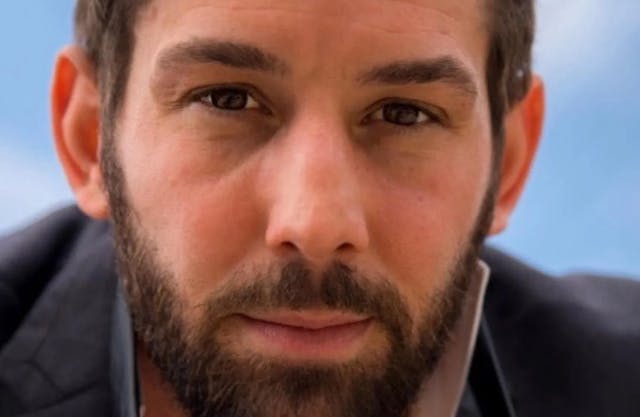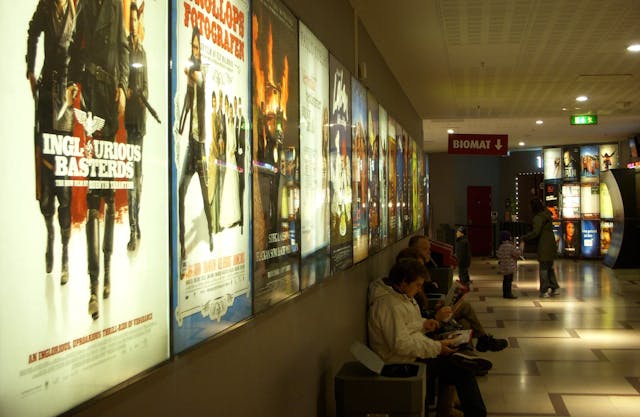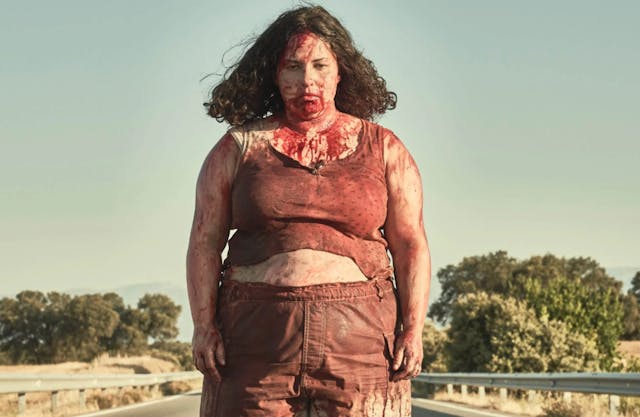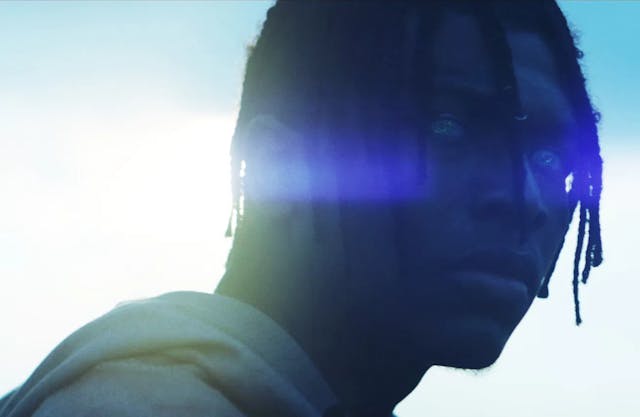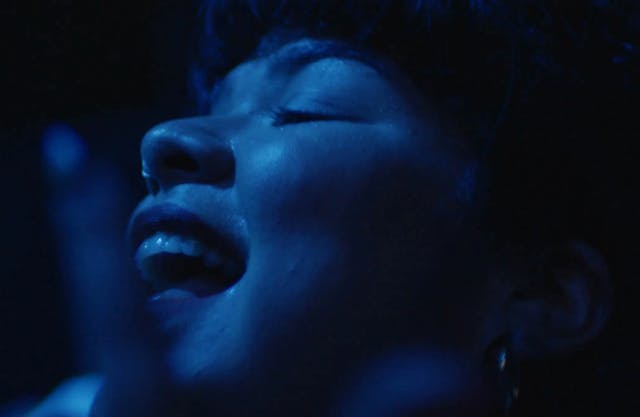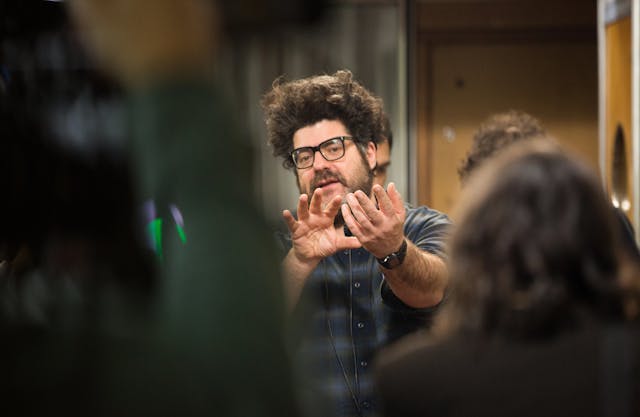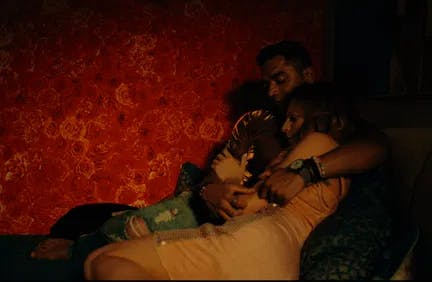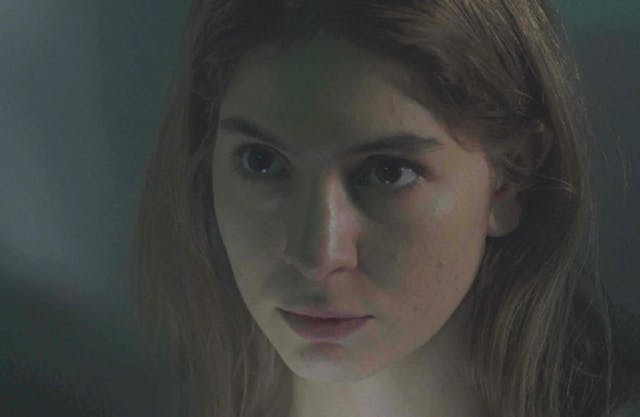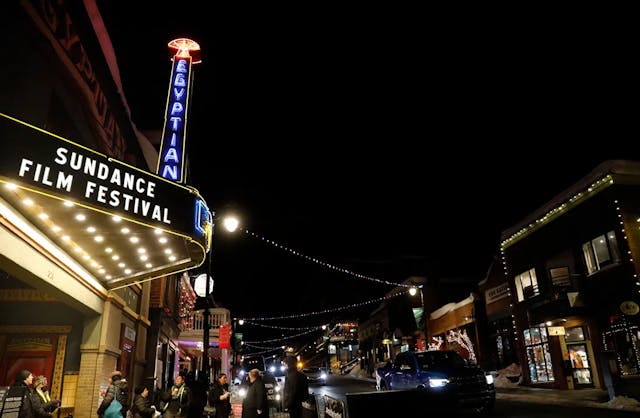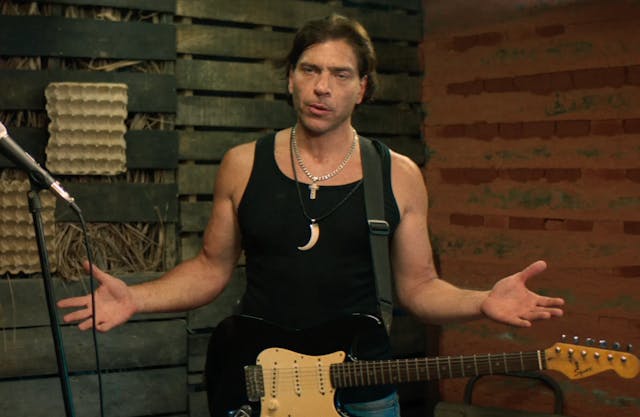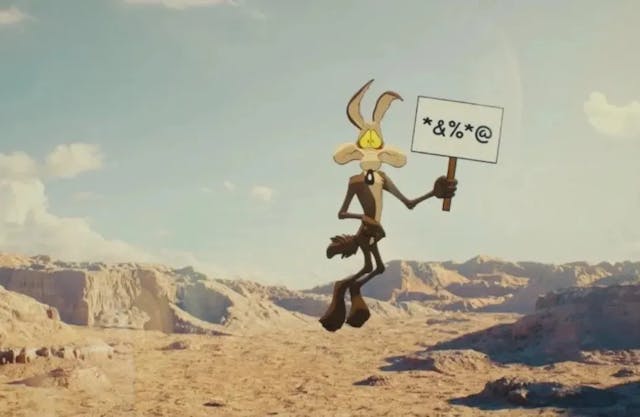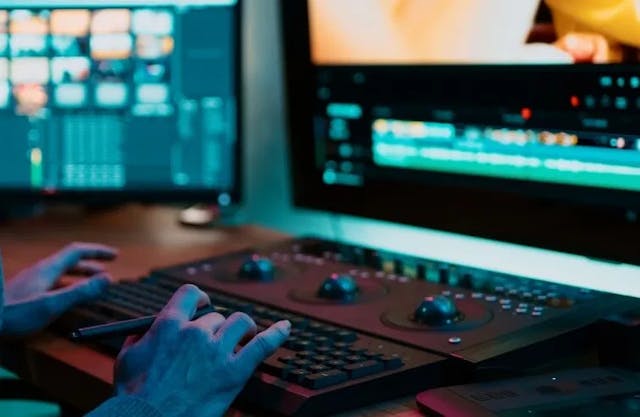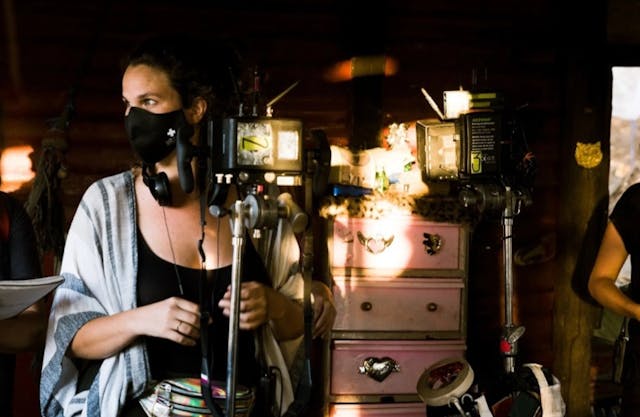“ALL THE FIRES:”Mexican Queer Coming-Of-Age Film Ignites Art House
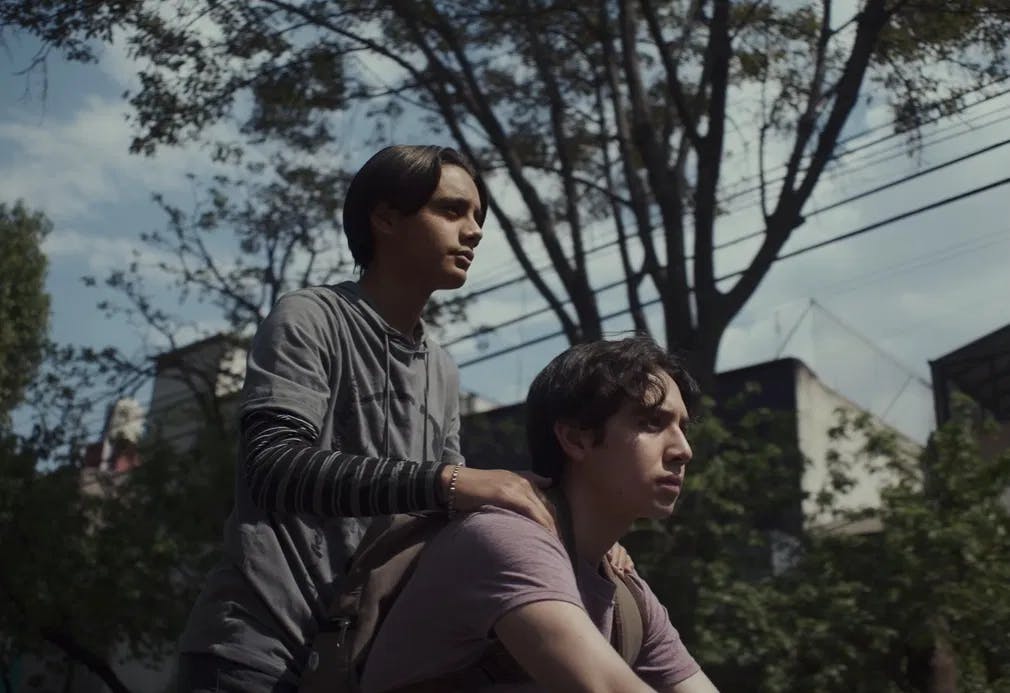
Burn this: López and Rojano embark on a journey of self-discovery in "All The Fires." / Photo courtesy of Daniel Loustaunau and Colectivo Colmena.
Coming-of-age films go up in flames in Mexican writer and director Mauricio Calderón Rico's feature film debut "All The Fires." The movie follows teenage Bruno (Sebastián Rojano), mourning his father's death and resisting his mother's attempts to move on and start a new relationship. To complicate things, his best friend Ian (Ari López) manifests a romantic interest in him. A budding pyromaniac, Bruno finds solace in recording himself setting things on fire and dutifully uploading the videos to a YouTube channel. That's how he meets Daniela (Natalia Quiróz), a fan who promptly requests nudes.
The striking, deeply felt coming-of-age story is premiering this month at high-profile film festivals. You can catch it at NewFest, New York's LGBTQ+Film Festival, and The OUTSHINE LGBTQ+ Film Festival at Fort Lauderdale, FL, will play in the main competition of Mexico's most important cinephile event, the Morelia Film Festival. We spoke with Mauricio Calderón Rico between appearances at film festivals about his creative process, the collective nature of filmmaking, and the movies that inspire him.
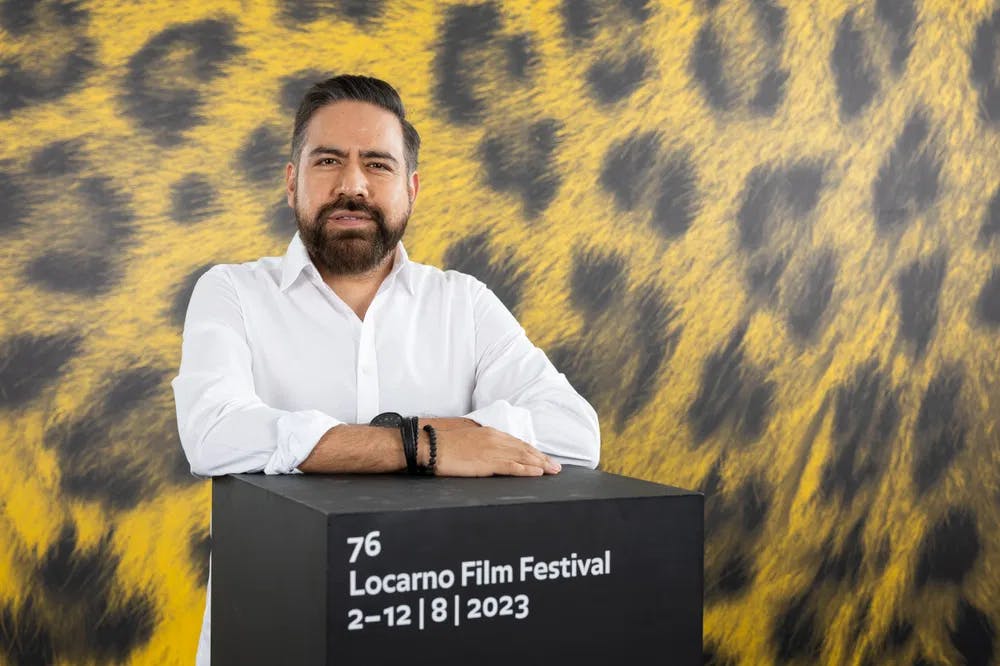
Mauricio Calderón Rico, director of "All The Fires," at the 2023 Locarno Film Festival. / Photo courtesy of Daniel Loustaunau and Colectivo Colmena.
Lightning the Fire of Indie Movies
Popflick: Before making this film, you have six short films in your filmography. What’s your relationship with this type of project? Do you see them as complete films that were incidentally short in length, or were they exercises to get you to the point where you could make a feature film?
Mauricio Calderón Rico: You never really have that awareness when making them, right? Whether to say if this is an exercise or if you want to produce them for their own sake. It is no longer about the result but about exercising the creative muscles to direct and write other scripts. So, I never really made them with a consciousness of knowing very well what I wanted. Sometimes, I didn't write the script; I just took someone else's, or many times, I also wrote. I had the opportunity to do an animated short, allowing me to diversify up to a bit. Now that I have had the chance to direct my debut film, I can see I was already creating a kind of language up to this moment.
Popflick: What did you learn from that process that helped you when making a feature film?
Mauricio Calderón Rico: It bothers me a little when the credit "All the Fires, by Mauricio Calderón Rico" appears because I learned that filmmaking is the work and the achievement of an impressive number of people, especially the creative heads. It's a joint work, not just one person's work. I also learned that with a budget, there is a little more freedom to do things. Many times, our short films suffered because we didn't have the resources to make them. Here, you can give yourself a little more freedom to create.
And another important thing I learned is that you have to be very clear and concise in the script, preferably. The shorter, the better. Because we also left something out. Some scenes are left out at the end so the audience's attention does not wane. And yes, it was hard to let those scenes go because they were interesting. So, it hurt me to cut out many things, but it was necessary.
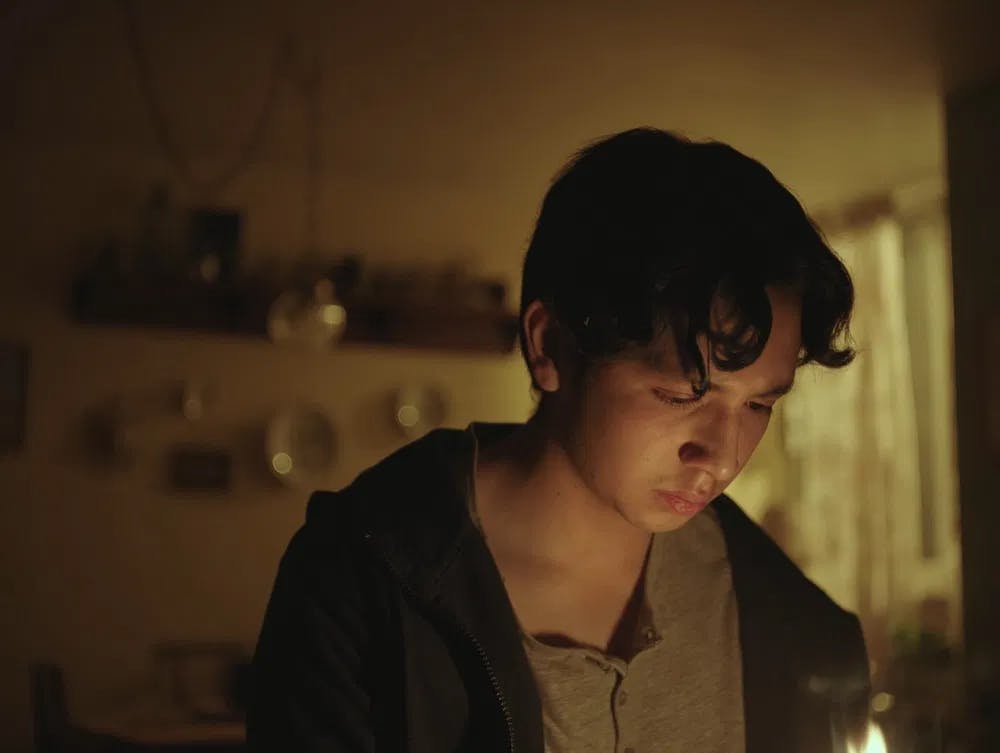
Facing the flames: Rojano lights up in "All The Fires." / Photo courtesy of Daniel Loustaunau and Colectivo Colmena.
Popflick: At what point did you do that editing exercise in the creative process? Before shooting? While shooting? In post? Was it a budget demand, or was it your creative decision?
Mauricio Calderón Rico: Well, a lot of editing work was done before filming because we didn't want to spend money just for the sake of it, but we wanted to shoot the things we were sure we would need. In the post-production process, once the final cut and everything was done, we did some cuts to give the film its rhythm so that the viewer's attention wouldn't wander or waver, right? So this was kind of the two, both pre and post, where that editing work is done.
Popflick: Was it very hard for you to let go of those episodes?
Mauricio Calderón Rico: Well, a little bit, I mean, it doesn't bother me now, but I think that when it happened it was difficult.
Popflick: I understand that the film has autobiographical elements. Was that process difficult for you? How was it, let's say, to decide to expose your life or use it as dramatic material for a film?
Mauricio Calderón Rico: Well, the truth is that the film is not autobiographical, but it does have some anecdotes or events that happened to me and things that happened to friends. When you write and put in your own experiences, they are no longer yours. On the page, it’s not yourself but a character. So you must give up and accept that the person on the paper is not you. Sometimes, it is much easier because you dramatize subjects foreign to you that you are just interested in touching and you want people to see. By then, there is no longer any shame about whatever you put on the screen.
Popflick: You don’t fret about what will Grandma think when she sees the movie!
Mauricio Calderón Rico: Well, to begin with, you've already reached an age where you don't even have grandparents, right? So, it doesn't really matter!
Behind The Scenes of A Mexican Film Production
Popflick: The film is shot at Academy Ratio. Why did you make that decision?
Mauricio Calderón Rico: That was a decision that photographer Miguel Escudero and I made together. He is a superb photographer. We admire him a lot, and I say "we" because he has been the photographer of the three feature films of Colectivo Colmena, and he has a lot to do with the language we propose. Our aspect ratio is not exactly Academy Ratio; it's a little bit wider, it's a little bit bigger. I like to justify it also because of the little camera Bruno uses. It gives you that look. But in fact, I have a curious anecdote about it. I told Miguel I would like a reason to justify using this image. He is a very good photographer, very mature. Even though he is very young, he has already made many feature films. And he told me, "Well, why not just for aesthetic reasons? There does not have to be anything else." And I said, "Of course!" I mean, the truth is that we give a lot of thought to something that should be simple. And yes, it's simply because we like the way it looks.
Popflick: Most of your characters are teenagers. Did they have acting experience? Were they beginners? How was your process of working with them?
Mauricio Calderón Rico: It was a very rich process, but initially, it was a little difficult because we had to do casting in the Pandemic. We had to watch them in videos, which is very different than having the person standing before us. When we had about ten or so that we liked, we invited them over to our offices at Colectivo Colmena. The ones we liked the most, we did a kind of two-week workshop where we did physical exercises, we did acting exercises, we did meditations…we wanted to see them. That's when we had more of a connection; we got closer. Those who reached the end of the process are the ones you see on screen. During the production process, I gave them a lot of creative freedom so they could improvise and say their dialogues as a kid their age would tell them. I feared this generation gap would be very noticeable because I went through adolescence many years ago. I did not want them to sound like adults! I gave them the dialogues, and they made them their own, saying them as a person their age would tell them.
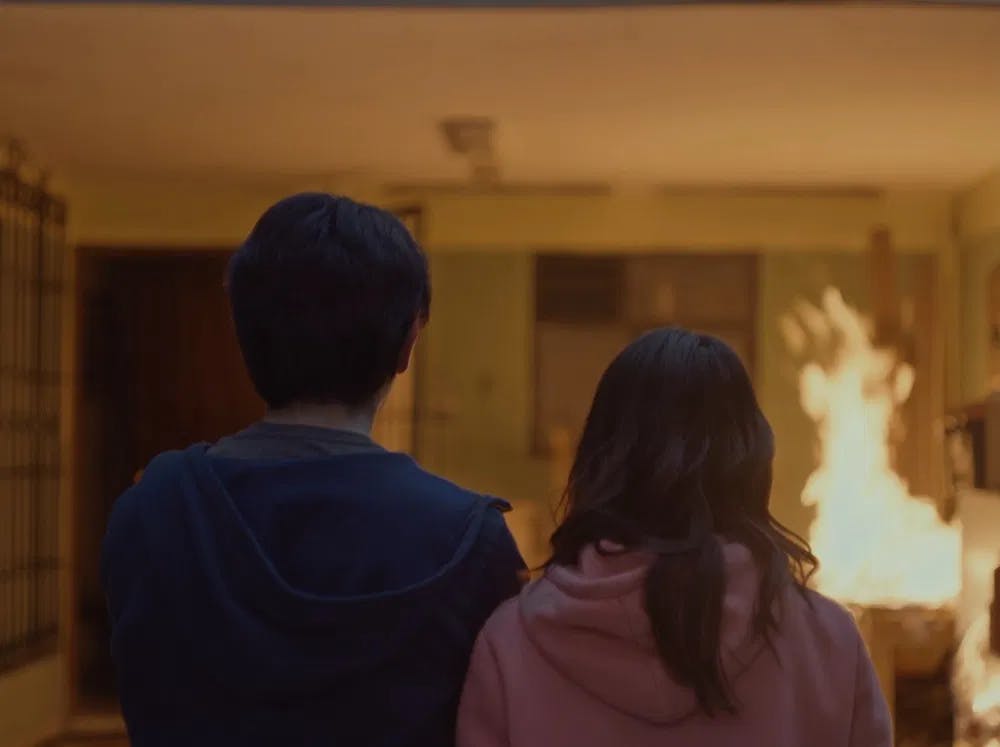
Young pyromaniacs' love story: Rojano and Natalia Quiroz burn down middle-class values in "All The Fires." / Photo courtesy of Daniel Loustausnau and Colectivo Colmena.
Popflick: This generation has grown up with a camera in hand, building a version of themselves that they project to the world through social media. Do you think that influenced them in any way? We can say that young people now have training in creating a character, a version of themselves.
Mauricio Calderón Rico: Yes, it is. What's interesting here is that the film takes place in 2008. Maybe it was difficult for them to stop being teenagers from 2022! If you see the technology in the movie, they are older cell phones. Now, everyone uses their cell phones as cameras. So, they would rather go backward and get rid of smartphones. But I think it still works out pretty well for the kids. They do their job very well.
Popflick: Why did you decide to go to 2008 to stage the film?
Mauricio Calderón Rico: The most important reason was that today's young people are much freer. They don't have so many complexes about sexuality. Everything is much more fluid than 15 years ago. Although it seems that it was not so long ago, the truth is that in these 15 years, there have been many advances in this topic. Fifteen years ago, society was not so open; there was still a bit of bullying and insecurities.
Popflick: The film's main theme is the acceptance of the protagonist's sexual identity. Would you say this subject is still taboo in Mexico? Can we say that it is a liberal country now, or is this not the case?
Mauricio Calderón Rico: I would say Mexico City is more liberal. But the truth is that Mexico, after Brazil, has the most homophobic attacks. So, I think it is very important to return to the 101 of sexuality. There are many cities and towns in Mexico where it is still not well seen; it is not accepted to be queer. It is not normalized. So, we must create these stories where we talk more about tolerance, normalization, and the fact that we are people like everyone else. There will be easier progress in society, and above all in families.
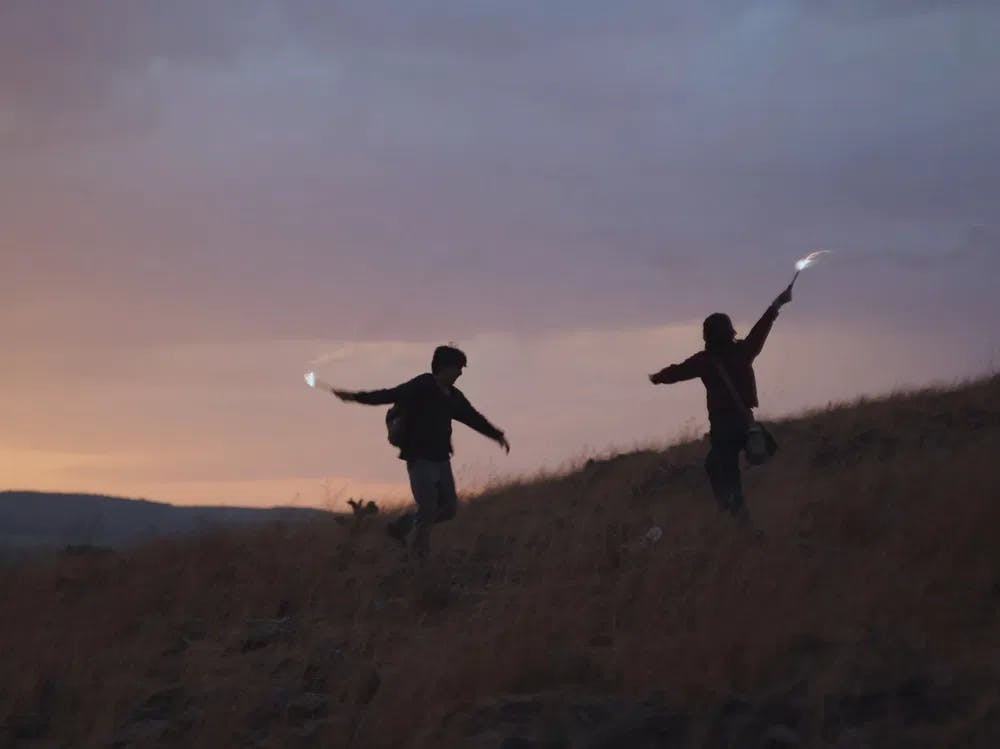
Childhood's twilight: Rojano, López, and the last flames of innocence in "All The Fires." / Photo courtesy of Daniel Loustaunau and Colectivo Colmena.
Popflick: Coincidentally, the United States is now experiencing a wave of ultra-conservative political movements attacking transgender rights, women's reproductive rights, and fears for requests such as equal marriage. Is there a similar phenomenon in Mexico?
Mauricio Calderón Rico: Yes, totally. I believe these echoes come from other places, not so much from Europe as from the United States. The proliferation of these politicians is also reflected in Mexico. I feel these are the death throes of a movement in extinction. Because evidently, progress is going to continue to move forward. But their kicks are very strong. They are less powerful, so they try to convince other population sectors. However, I feel that these types of stories, like "All the Fires," are important for that reason, so they can see that we are normal people and do no harm.
It Takes a Village To Make Indie Movies
Popflick: Earlier, you had mentioned to me something about the collective nature of the work of making a film. Colectivo Colmena is listed as such in the credits of the film. What is Colectivo Colmena? Is it a production company, or does it have a social nature? How do you see yourselves?
Mauricio Calderón Rico: Well, we like to call ourselves a collective. Although we do sign our stuff, traditionally crediting the director and writer, we are a bit of a horizontal group because we all have a say. We are a core group of five people, and around us, there is a group of friends or people who have been part of the collective at some point in history, but they are always around. We also have this thing we call Lab Hive, where we read our projects and all give our opinions. So we're moving away from this myth of the solitary Creator, where he writes and directs his stuff and edits it. We think that several heads think better than one. Then, in pre-production and post-production, we all give our opinion.
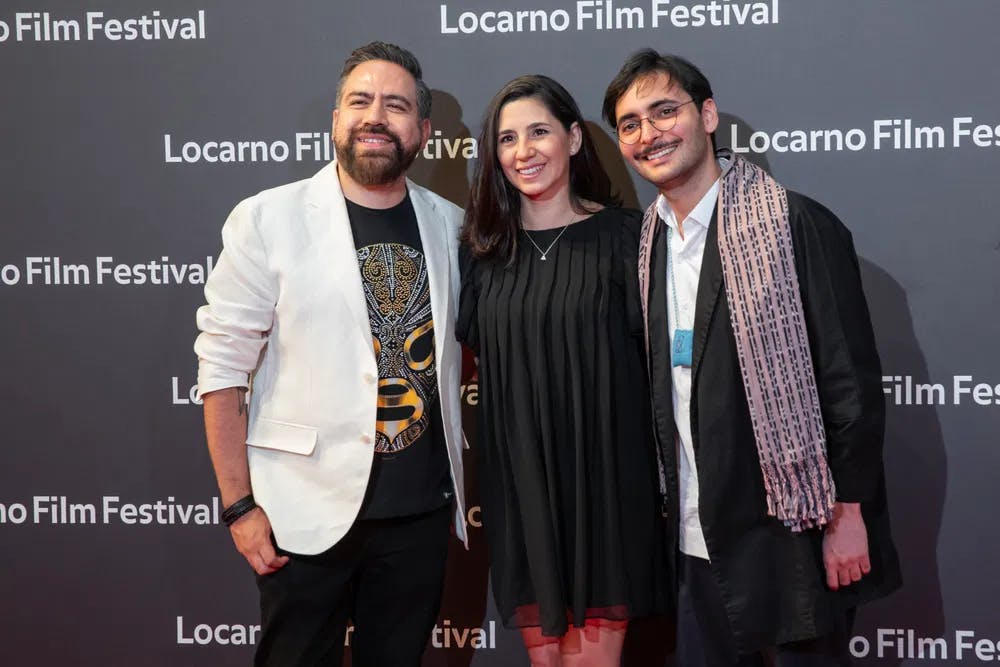
Director Mauricio Calderón Rico and producers Araceli Velazquez and Daniel Loustaunau at the 2023 Locarno Film Festival / Photo courtesy of Daniel Loustaunau and Colectivo Colmena.
Popflick: Even doing low budget movies is hard now. How do you evaluate Mexico's independent production state today? Is there sufficient access to resources? The subsidies that come from the State are being maintained? What is the outlook for people who want to get into filmmaking now?
Mauricio Calderón Rico: Currently, there are several sources of support. We are proof of that because that's how we made the film. However, there are so many millions of us and so much talent in Mexico that everything falls short. We advocate for more government investment; if that is not forthcoming, private investment is the way to go if governmental investment is not possible. The other problem here is the theatrical exhibition. People don't go to see Mexican cinema, but I think there is a lot of talent, and we should exploit it.
Popflick: How do you feel now that the film is ready and being seen even outside of Mexico because it premieres in the United States this week? What do you think is left for the American public?
Mauricio Calderón Rico: We are excited and happy that our work is being seen everywhere. On the other hand, we are nervous because you never know how the public will react. We had the opportunity to be at the Locarno Film Festival and got very good reviews. Maybe it's because the narrative is about acceptance. I think that's a word you said that reflects the film very well. And it is not only the acceptance of sexuality but also the acceptance of mourning that some people are no longer returning. The acceptance of adulthood in general. Ultimately, that is the goal of Coming of Age films. They tell us how to face adulthood.
After the Fire: What's Next for Mauricio Calderón Rico
Popflick: What is your next project? Do you already have something in your sights?
Mauricio Calderón Rico: I'm not moving away from the "coming of age" because I like it a lot. I have been writing several things, but I'm zeroing in on a story that is perhaps a little more adult, which has to do with the LGBT community but also with ideas about nature and vegetation. It's a drama with some touches of fantasy.
Popflick: Who are the directors or films that inspired you to follow this path? What are your references?
Mauricio Calderón Rico: I like the work of the Dardenne brothers, and I think that it is felt a little bit in the language of our film. I also really like Xavier Dolan's films, which look very fresh and youthful. That is one of the references we had to make this film, and also Mexican films like "Los Insólitos Peces Gatos" (Claudia Saint-Luce, 2013) - (Popflick note:We interviewed director Claudia Saint Luce about her latest film, "Love and Mathematics") - like "Te Prometo Anarquía" (Julio Hernándz Cordón, 2015) - the breakthrough role of "Babylon"'s Diego Calva -. And also the cinema of Andrea Arnold and Lynne Ramsay, who are powerful women in their discourse.
Want to get an email when we publish new content?
Subscribe today